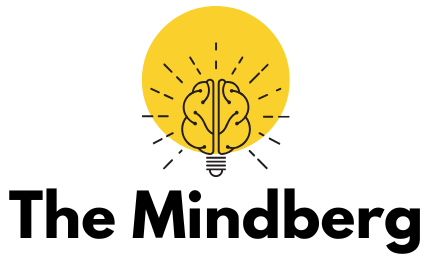Narcolepsy is a chronic neurological disorder that significantly impacts an individual’s ability to regulate sleep-wake cycles. Characterized by excessive daytime sleepiness and sudden, uncontrollable episodes of sleep, narcolepsy can disrupt both personal and professional aspects of life.
While the condition affects people of all ages, its symptoms often manifest during adolescence or early adulthood, making early detection and management crucial. The unpredictable nature of narcolepsy can lead to safety concerns, reduced productivity, and emotional distress, highlighting the importance of understanding its signs and exploring effective coping strategies.
For individuals living with narcolepsy, understanding the condition is the first step toward improving their quality of life. This blog delves into the key symptoms, underlying causes, and practical approaches for managing narcolepsy. Additionally, it offers insights into lifestyle adjustments and medical treatments that can empower those affected to regain a sense of control over their daily routines.
Understanding Narcolepsy and Its Symptoms
Narcolepsy is more than just feeling tired; it encompasses a range of symptoms that can vary in severity. Excessive daytime sleepiness (EDS) is the hallmark of this condition, often causing individuals to fall asleep unexpectedly, even during activities like eating or conversing. Another significant symptom is cataplexy, a sudden loss of muscle tone triggered by strong emotions such as laughter or surprise.
Sleep paralysis, a temporary inability to move or speak while waking up or falling asleep, is another common manifestation. Hallucinations, which can occur during sleep onset or awakening, may also affect individuals, creating vivid and sometimes frightening sensory experiences. Recognizing these symptoms is essential, as they provide the foundation for an accurate diagnosis and tailored treatment plan.
Identifying the Causes of Narcolepsy
The exact cause of narcolepsy remains unclear, but researchers have identified several contributing factors. A deficiency in hypocretin, a neurotransmitter that regulates wakefulness, is strongly linked to type 1 narcolepsy. This deficiency is often caused by autoimmune activity, where the body’s immune system mistakenly attacks the cells producing hypocretin.
Genetic predisposition also plays a role, as individuals with certain genetic markers are at a higher risk of developing narcolepsy. Environmental factors, such as infections or stress, may act as triggers in those who are genetically susceptible. While these factors do not guarantee the onset of narcolepsy, understanding them can help patients and healthcare providers take a more proactive approach.
The Role of Medical Diagnosis
Diagnosing narcolepsy requires a thorough evaluation, including a review of symptoms, medical history, and specialized tests. A sleep study, known as polysomnography, is often used to monitor brain activity, heart rate, and other physiological indicators during sleep. Another test, the Multiple Sleep Latency Test (MSLT), measures how quickly an individual falls asleep and whether they enter rapid eye movement (REM) sleep prematurely.
These diagnostic tools are critical for distinguishing narcolepsy from other sleep disorders, such as sleep apnea or insomnia. Early and accurate diagnosis can pave the way for effective treatment, minimizing the disruption caused by the condition.
Effective Medical Treatments
Although there is no cure for narcolepsy, several treatments can help manage its symptoms. Stimulant medications, such as modafinil or armodafinil, are often prescribed to reduce excessive daytime sleepiness. For managing cataplexy, sodium oxybate is a common treatment that also improves nighttime sleep quality.
Antidepressants may be used to address symptoms like cataplexy, sleep paralysis, and hallucinations. These medications work by regulating neurotransmitters involved in mood and muscle control. With the right combination of treatments, many individuals with narcolepsy can lead active and fulfilling lives.
Lifestyle Adjustments for Better Symptom Management
In addition to medical treatments, lifestyle modifications play a crucial role in managing narcolepsy. Maintaining a consistent sleep schedule helps regulate the body’s internal clock and reduces the frequency of sudden sleep attacks. Scheduled naps during the day can also alleviate excessive sleepiness, allowing individuals to remain alert during important tasks.
Regular physical activity and a balanced diet further enhance overall well-being and energy levels. Avoiding caffeine or heavy meals close to bedtime can improve nighttime sleep quality. These changes may seem small, but their cumulative effect can significantly reduce the impact of narcolepsy on daily life.
Creating a Supportive Environment
A supportive environment is essential for individuals with narcolepsy to thrive. Open communication with family, friends, and employers helps others understand the challenges posed by the condition. Educating peers about the disorder can foster empathy and reduce misunderstandings, particularly in professional settings.
Employers can offer accommodations, such as flexible schedules or designated rest areas, to support employees managing narcolepsy. Similarly, educators can implement strategies to help students cope with their symptoms in the classroom. Building a network of understanding individuals can alleviate the emotional burden often associated with narcolepsy.
Managing Safety Concerns
Narcolepsy can pose unique safety challenges, particularly in situations requiring sustained attention, such as driving. Individuals should discuss their condition with healthcare providers to assess their fitness for activities like operating machinery or vehicles. In some cases, medications or lifestyle changes can improve alertness enough to safely perform these tasks.
Incorporating safety measures, such as traveling with a companion or using public transportation, can mitigate risks. Awareness and proactive planning are key to minimizing the potential dangers associated with sudden sleep attacks.
Looking Toward the Future
Advancements in research continue to offer hope for individuals with narcolepsy. Studies exploring gene therapy, hypocretin replacement, and other innovative approaches aim to address the root causes of the disorder. These developments have the potential to revolutionize treatment and improve outcomes for those affected.
Participating in support groups or advocacy organizations allows individuals to stay informed about the latest research and connect with others facing similar challenges. By staying engaged with the community, people with narcolepsy can find inspiration and support to navigate their journey.
Living with narcolepsy presents unique challenges, but with the right strategies, individuals can lead meaningful and productive lives. Recognizing the signs of narcolepsy is the first step toward seeking help and gaining a clearer understanding of the condition. Through a combination of medical treatments, lifestyle adjustments, and a supportive environment, many individuals successfully manage their symptoms.
As research continues to evolve, the prospects for those with narcolepsy are becoming increasingly optimistic. Staying informed about advancements and seeking out supportive networks can provide both practical solutions and emotional comfort. While the journey may require resilience and adaptability, the tools and resources available today offer hope for a brighter, more manageable future.

